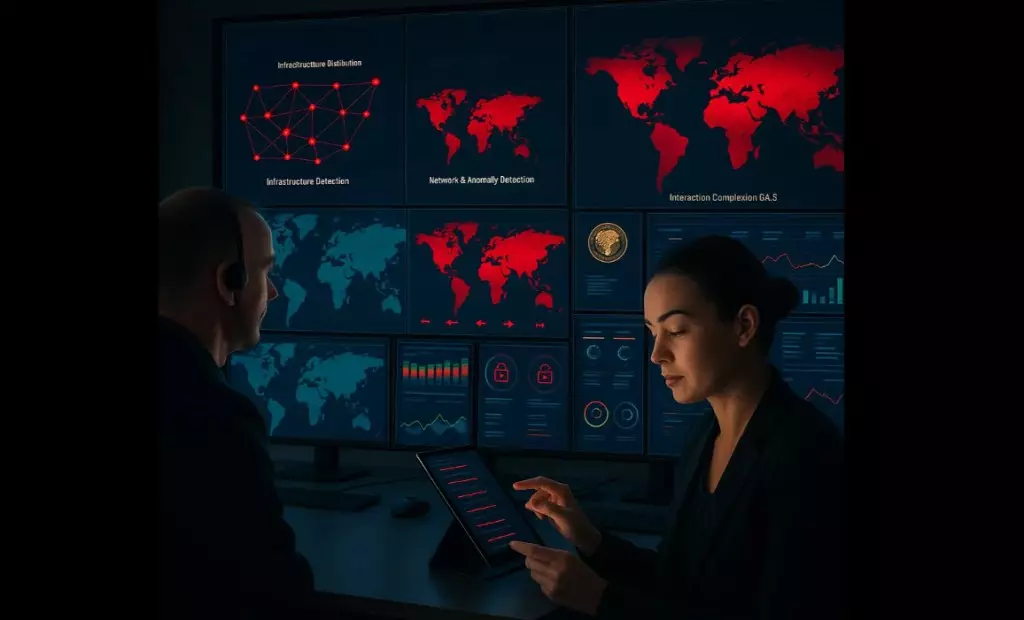The recent dismantling of the DanaBot malware platform signifies more than just a tactical victory in the ongoing battle against cybercrime; it marks a transformative moment in the cybersecurity landscape fueled by agentic AI. Launched in 2018, DanaBot evolved from a straightforward banking trojan into a sophisticated malware-as-a-service (MaaS) framework, wreaking havoc across over 300,000 systems globally. This shift from a singular focus on financial gain to a multidimensional threat, encompassing ransomware and espionage, sheds light on the complex interplay between organized cybercrime and state-sponsored activities. For all its high-tech capabilities, DanaBot was intricately intertwined with Russian cyber operations, blurring the lines between criminal enterprise and geopolitical maneuvering.
The operational mechanics of DanaBot are alarming—over 150 command-and-control servers deployed daily and a staggering capacity to compromise approximately 1,000 victims per day across 40 countries. The estimated economic damage in the United States alone surpasses a chilling $50 million. In this context, the takedown symbolizes more than just a disruption; it embodies the potential of advanced technologies like agentic AI to combat the evolving, ever-elusive cyber adversaries that threaten our critical infrastructure.
Agentic AI: A Game Changer in Cyber Defense
Traditionally, Security Operations Centers (SOCs) have relied on static, rule-based systems to combat cybersecurity threats—an approach increasingly inadequate in the face of rapid technological evolution. The emergence of agentic AI offers a refreshing paradigm shift. Capable of real-time learning and adaptation, agentic AI equips SOCs with predictive threat modeling and real-time telemetry analysis, effectively reallocating operational advantages back toward defenders. The ability to automate complex forensic analysis allowed cybersecurity experts to identify DanaBot’s digital footprint in mere weeks, compared to the months it typically would have taken. This crucial time savings is redefining the balance of power against cybercriminals and opening new avenues for prevention.
By facilitating a transformation from reactive alert-chasing to proactive, intelligence-driven operations, agentic AI addresses the longstanding issue of alert fatigue plaguing SOC professionals. A staggering, historic false-positive rate of 40% has been a thorn in the side of security efforts, causing analysts to sift through irrelevant warnings instead of focusing on legitimate threats. Innovations like IBM’s QRadar and Microsoft Security Copilot are revolutionizing this landscape, allowing analysts to concentrate on genuine, actionable intelligence.
Strategic Implementation: The Path to Efficacy
For SOC leaders looking to leverage the potential of agentic AI, a well-thought-out, strategic approach is essential. It is crucial to begin with small-scale implementations that focus on high-volume, low-complexity tasks. For instance, automating routine phishing analysis or malware identification can serve as initial victories, demonstrating measurable returns on investment. Such quick wins not only foster internal buy-in for advanced technologies but also set the stage for broader scalability in the security framework.
The task doesn’t end with implementation; establishing robust governance structures is equally critical in ensuring these advanced systems operate ethically and responsibly. Clear guidelines on interactions with the AI and well-documented audit trails promote accountability in this new frontier of cybersecurity. Misuse or operational failures could have disastrous consequences in an environment already fraught with rapidly evolving threats and technologies.
The Bigger Picture: Aligning AI with Business Goals
As organizations adopt agentic AI technologies, it’s imperative to align these innovations with key performance indicators (KPIs) that drive real business value. Reducing false positives and improving metrics like mean time to resolution (MTTR) are not merely technical goals; they resonate throughout the organization, impacting productivity and overall operational efficiency.
In a world where adversaries are moving at machine speed, equipping SOCs with advanced AI capabilities transforms from an optional enhancement into an essential strategy for survival. The rapid evolution of adversarial tactics necessitates that organizations become not just reactive but anticipatory in their approach to cybersecurity.
In sum, the lessons learned from the takedown of mobile threats like DanaBot highlight the pressing need to upskill our defenses with agentic AI. This journey requires acknowledging the complex and often dangerous landscape of cybersecurity while embracing the innovative solutions that can be deployed to safeguard critical infrastructure and sensitive data. While agentic AI presents exciting opportunities for revolutionizing cybersecurity, it also serves as a stark reminder that the shadows of cyber threats are only growing darker; a proactive approach is now more critical than ever.









Leave a Reply